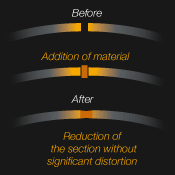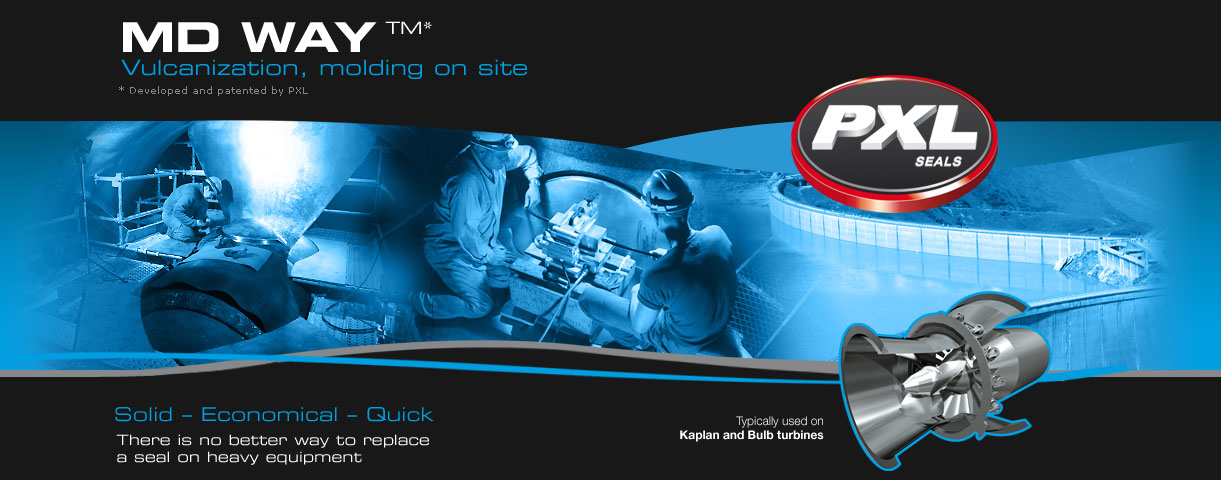


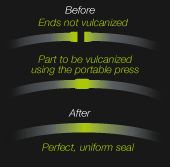
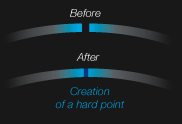
Principe : joining together the two ends of the seal previously vulcanized/molded. This procedure is carried out with the help of a curable, heat bonded adhesive and a portable device.
This type of joining causes a risk of a fragile joint due to the over heating of the parts adjacent to the seal.
Heating the seal vulcanized beforehand can lead to the appearance of cracks and fissures
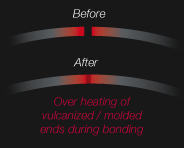
Principle : Inserting a sheet of non vulcanized material between the two ends of the seal prior to molding
The addition of material close to the center of the seal makes it possible to avoid cracks and fissures, although this method always has a risk of making the seal fragile due to overheating of the parts adjacent to the seal.
